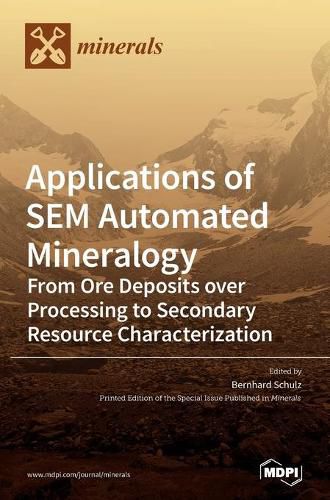Readings Newsletter
Become a Readings Member to make your shopping experience even easier.
Sign in or sign up for free!
You’re not far away from qualifying for FREE standard shipping within Australia
You’ve qualified for FREE standard shipping within Australia
The cart is loading…






This title is printed to order. This book may have been self-published. If so, we cannot guarantee the quality of the content. In the main most books will have gone through the editing process however some may not. We therefore suggest that you be aware of this before ordering this book. If in doubt check either the author or publisher’s details as we are unable to accept any returns unless they are faulty. Please contact us if you have any questions.
During the last decade, software developments in Scanning Electron Microscopy (SEM) provoked a notable increase of applications to the study of solid matter. The mineral liberation analysis (MLA) of processed metal ores was an important drive for innovations that led to QEMSCAN, MLA and other software platforms. These combine the assessment of the backscattered electron (BSE) image to the directed steering of the electron beam for energy dispersive spectroscopy (EDS) to automated mineralogy. However, despite a wide distribution of SEM instruments in material research and industry, the potential of SEM automated mineralogy is still under-utilised. The characterisation of primary ores, and the optimisation of comminution, flotation, mineral concentration and metallurgical processes in the mining industry by generating quantified data, is still the major application field of SEM automated mineralogy. However, there is interesting potential beyond these classical fields of geometallurgy and metal ore fingerprinting. Slags, pottery and artefacts can be studied in an archeological context for the recognition of provenance and trade pathways; soil, and solid particles of all kinds, are objects in forensic science. SEM automated mineralogy allows new insight in the fields of process chemistry and recycling technology.
$9.00 standard shipping within Australia
FREE standard shipping within Australia for orders over $100.00
Express & International shipping calculated at checkout
This title is printed to order. This book may have been self-published. If so, we cannot guarantee the quality of the content. In the main most books will have gone through the editing process however some may not. We therefore suggest that you be aware of this before ordering this book. If in doubt check either the author or publisher’s details as we are unable to accept any returns unless they are faulty. Please contact us if you have any questions.
During the last decade, software developments in Scanning Electron Microscopy (SEM) provoked a notable increase of applications to the study of solid matter. The mineral liberation analysis (MLA) of processed metal ores was an important drive for innovations that led to QEMSCAN, MLA and other software platforms. These combine the assessment of the backscattered electron (BSE) image to the directed steering of the electron beam for energy dispersive spectroscopy (EDS) to automated mineralogy. However, despite a wide distribution of SEM instruments in material research and industry, the potential of SEM automated mineralogy is still under-utilised. The characterisation of primary ores, and the optimisation of comminution, flotation, mineral concentration and metallurgical processes in the mining industry by generating quantified data, is still the major application field of SEM automated mineralogy. However, there is interesting potential beyond these classical fields of geometallurgy and metal ore fingerprinting. Slags, pottery and artefacts can be studied in an archeological context for the recognition of provenance and trade pathways; soil, and solid particles of all kinds, are objects in forensic science. SEM automated mineralogy allows new insight in the fields of process chemistry and recycling technology.